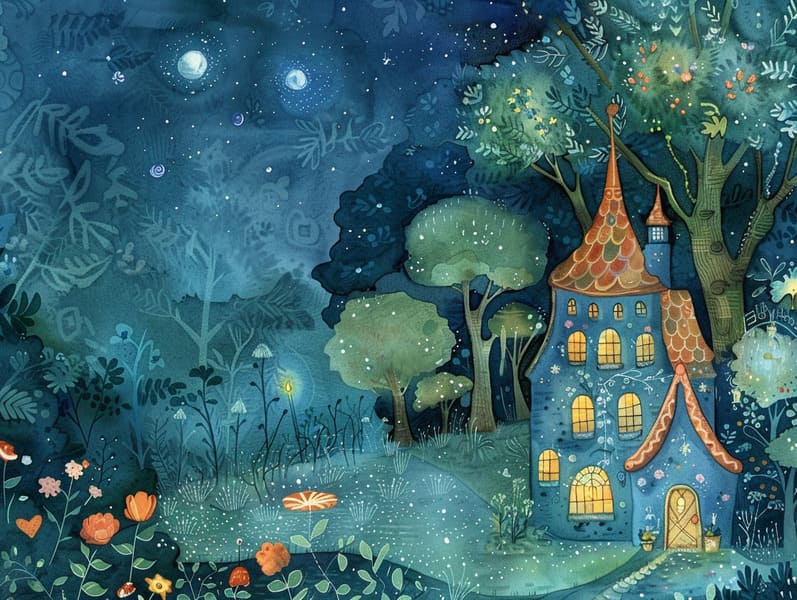The Genesis of Short Fairy Tales with Its Everlasting Loveliness.
The Genesis of Short Fairy Tales with Its Everlasting Loveliness.
Blog Article

Ancient fairy tales have historical significance. These stories have been transmitted from one generation to the next well before they were ever inscribed. They originated from a variety of societies, including Indigenous traditions. They were initially conveyed among older generations, often carrying themes and messages relevant to the societal norms and beliefs of the time.
The famous Grimm duo, Jacob and Wilhelm Grimm, were among the first to compile many of these beloved narratives. Their collection, "Grimm's Children's Stories," included stories like "Cinderella," "Hansel and Grethel," and "Snow-White and Rose-Red," which have since become pillars in the world of children's fairy tales. Similarly, Hans Andersen's fantastical tales, such as "The Mermaid's Tale," and "The Ugly Duckling," have captured hearts worldwide, solidifying their place in the pantheon of treasured fairy tales.
Despite their ancient origins, these stories remain as relevant as ever, especially as children's night stories. These magical stories are now available in many formats, including vibrantly illustrated books, delightful animations, and free fairy tales online.
Their continued relevance can be traced to several charming aspects:
Life Lessons: Classic fairy tales often teach important moral lessons. Tales like "The Shepherd Boy and the Wolf" teach the virtue of truth, while "The Story of the Tortoise and the Hare" show the traits of determination and modesty. These stories offer children clear distinctions between truth and falsehood, molding their moral compass in a mild yet profound way.
Warmth and Understanding: Ancient fairy tales frequently showcase individuals facing problems and hurdles, provoking young listeners to identify with their struggles and encourage their triumphs. For instance, "Beauty and Her Beast" emphasizes the significance of valuing inner qualities to appreciate the real person of a individual, fostering tenderness and insight.
Cultural Comprehension: Many fairy tales are rich in the cultural contexts from which they were born. Immersing in these stories can provide captivating looks into different beliefs, encouraging a sense of global appreciation and respect.
Inventiveness and Imagination: The fanciful elements in fairy tales—magic wands—enliven children’s imaginative ideas. These fairy tales move readers to supernatural realms, invigorating imaginative thinking and a sense of curiosity that stays a lifetime.
Traditional fairy tales are not only fantastical but also didactic. They function as magical tools in advancing various cognitive and affective skills in young readers. When ancient fairy tales are voiced, they strengthen speaking abilities by showing new language and complex sentence structures. This practice also promotes auditory perception and focus, as young ones hang on every word, enthusiastic to see what happens next.
Furthermore, talking about the themes and characters of traditional fairy tales can enhance intellectual skills and thought processes. Young readers are led to pinpoint patterns, predict happenings, and know cause and effect. These explorations also assist kids verbalize their thoughts and feelings, nurturing their emotional intelligence.
In today’s digital age, the proliferation of digital fairy tales has made these tales more accessible than ever. Internet resources and mobile apps supply ample collections of old fairy tales that can be looked at or listened to anytime, anywhere. Fairy tales read out loud are particularly liked, offering an captivating way for children to appreciate these mesmerizing stories. Read-aloud stories and read-out-loud stories take characters and settings to life, often supported by magical sound effects and songs that raise the story journey.
The enduring charm of timeless fairy tales lies in their ability to evolve to current eras while sustaining their essential themes. Contemporary reinterpretations of these narratives often include more representative characters and modern settings, making them pertinent to today’s audience. However, the basic principles of spirit, understanding, and justness remain unchanged, continuing to move young readers of all ages.
Fairy tales also offer a sense of protection and recognition. They deliver a organized narrative with a clear beginning, middle, and end, often finishing with the conclusion of conflicts and the triumph of virtue over wickedness. This dependability can be comforting for children, introducing a sense of unchangeability in an unpredictable world.
Classic fairy tales continue to mesmerize and train new generations, maintaining their grandeur and find it here relevance in modern society. As children's bedtime stories, they present a perfect blend of allure and teaching, furthering moral values, empathy, and creativity. The presence of web-based fairy tales and the sought after status of fairy tales spoken make sure that these timeless tales remain obtainable to new generations.
By perpetuating and making known these stories, we continue to revere the rich tapestry of mythology and cultural heritage. Whether you are viewing a gorgeously illustrated book, exploring a internet library, or hearing an read-aloud story, the attraction of timeless fairy tales is always within reach. These fairy tales teach us of the endless impact of narratives and its ability to join us across generations and cultures.
Regardless if you are discovering a artistically illustrated book, discovering a web-based library, or hearing an sound book, the elegance of ancient fairy tales is always within reach.
These narratives demonstrate of the unceasing force of stories and its ability to connect us across time and space, making a tie that enchants and educates alike.